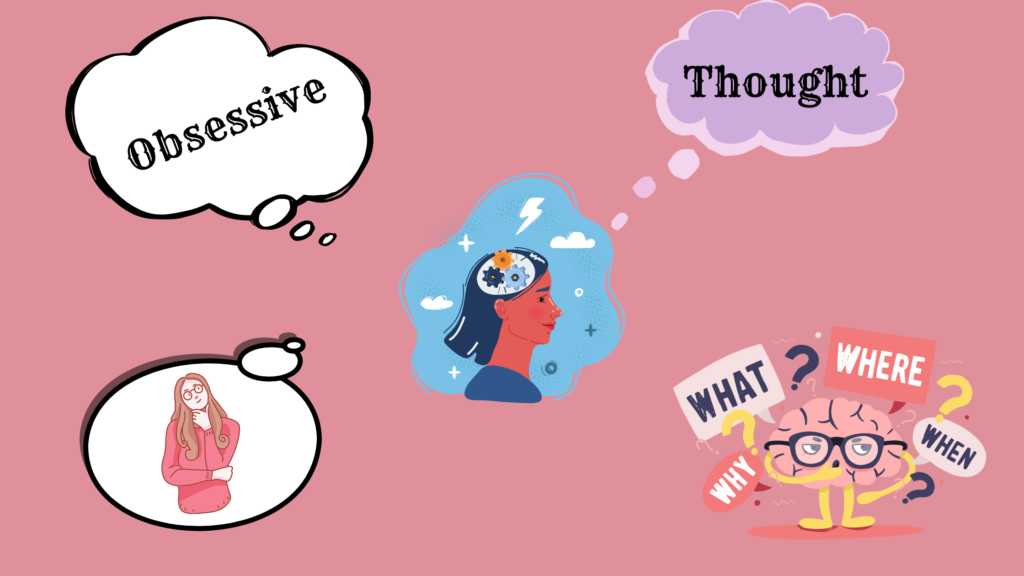
Are obsessive thoughts and compulsive behaviors disturbing your daily life? If you want to get rid of these repetitive unwanted thoughts, then this article is for you. Stick around this and explore the obsessive-compulsive disorder, its cause, treatment and why it occurs, the problem with obsessive thoughts, and how obsessive thoughts influence our lifestyle.
What is Obsessive Compulsive Disorder (OCD)?
Obsessive-compulsive disorder (OCD) is a mental illness characterized by overwhelming and irrational thoughts that drive a person to perform certain actions over and over again.
The term “obsessive-compulsive disorder” was coined in 1909 by the French psychiatrist, Dr. Jean-Martin Charcot. It is classified as an anxiety disorder, with symptoms that include excessive thoughts about the importance of things or tasks, persistent worries, and rituals or routines that are performed to reduce stress.
OCD makes the brain fixate on a specific thought or urge, much like a needle gets stuck on an old record. For instance, if you’re afraid of burning down your house, you could check the stove 20 times to make sure it’s actually off, or you might wash your hands until they’re completely raw out of concern for germs.
OCD Obsessions
Obsessions are uncontrollable mental recurrences of thoughts, pictures, or impulses. Although you don’t want to think of these thoughts, you cannot stop them. Sadly, these intrusive thoughts are frequently upsetting and distracting.
OCD Compulsions
Compulsions are repetitive activities/behaviors or rituals that you feel compelled to perform. Compulsions are frequently carried out to rid one of the obsessions. For instance, if you fear contamination, you may create complex cleaning regimens.
How do stop Obsessive Thoughts and Repetitive Behavioral patterns?
If you are feeling obsessive thoughts or OCD symptoms and want to stop them, here are a few self-help tips that may help:
1: Identify your Triggers
Recognizing the thoughts or circumstances that set off your obsessions and compulsions is the first step in controlling your OCD symptoms. Make a list of the daily triggers you encounter and the obsessions they bring on. Rate the degree of fear or worry you felt in each circumstance, followed by the compulsions or mental techniques you employed to reduce your anxiety.
You can avoid obsessions by keeping note of your triggers. Additionally, you can lessen your obsessive urges by anticipating them before they happen. For instance, if part of your obsessive habit is checking windows are closed, doors are locked, or appliances are switched off, then try to lock the door or pay additional attention to the appliance the first time.
2: Learn to Resist OCD Compulsions
You can learn to control the urges to carry out your compulsive rituals by regularly exposing yourself to the OCD triggers that make you anxious. This is a cornerstone of OCD professional therapy and is referred to as ERP (exposure and response prevention).
To successfully use ERP, you must continually expose yourself to the object of your fixation and then resist engaging in the compulsive behavior. It would normally help you cope with your anxiety. For example, if you have fear, then build a fear ladder, use your fear ladder, practice these steps and focus on the feeling of anxiety that you have.
Challenge your obsessive Thoughts & Prevent Obsessive Thinking
Remember, you are not a bad person if you had an unpleasant idea. Even undesirable, bothersome, or violent ideas are common. So, don’t suppress them but challenge your obsessive thinking and replace it with positive.
The following techniques can assist you in recognizing your thoughts for what they are and in taking back control of your worried thoughts.
Keep a notebook and pencil nearby, or use a Smartphone to type. Write down all of your thoughts or compulsions as soon as you start to obsess.
Keep writing to document your exact thoughts as the OCD urges continue.
The force of a statement or urge can be diminished by repeatedly writing it down.
Your obsessive thoughts will likely stop sooner if you write them down because thinking thoughts is far harder work than writing them down.
Make obsessive thoughts OCD worry period.
Create the habit of rescheduling obsessions and compulsions rather than attempting to repress them.
Use your worry period to challenge negative or intrusive thoughts by asking yourself:
Is there any evidence that the thought is true? Any realistic way of looking at the situation? Or is the thought helpful?
Make Lifestyle Changes to Refrain the Obsessive Thoughts
One of the biggest factors in preventing OCD compulsions is living a healthy & balanced lifestyle.
Regular exercise: Exercise is a safe and effective anxiety treatment that reduces OCD symptoms by retraining your thoughts when compulsive thoughts and behaviors start to surface.
Try to engage in aerobic activity for at least 30 minutes most days. Ten minutes spread throughout the day, especially if you pay close attention to your movements, can be just as helpful as a longer period.
Get enough sleep & adequate rest: These maintain the emotional equilibrium that is essential for dealing with anxiety disorders like OCD.
Avoid using tobacco and alcohol: The use of alcohol and smoking may appear to be relaxing, but in reality, they increase OCD symptoms and anxiety.
How do I stop Obsessive Thinking?
When you find yourself distracted and your thoughts drifting to bad memories, try distraction therapy. It has been proven to work in reducing rumination, so look around you for something else to do and move on from it.
Make a plan to act on that negative notion rather than keep thinking the same thing over time.
Take Action
Question your thoughts
Read just your life goals
Try mediation
The Bottom line
Having unpleasant, violent thoughts can be normal but repetitive thoughts or repetitive behaviors can destroy your personality, so reschedule your unpleasant thought with pleasant ones, don’t repress your thoughts but work on them and keep yourself at bay from all obsessions and compulsions.
Click here for more resources on how to get rid of obsessive thoughts
For more articles visit resolvestressalways
